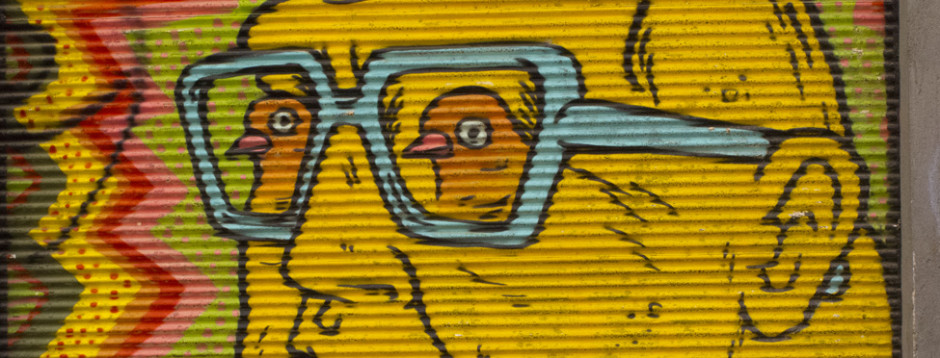Miniature Universes Constructed from Archaeological Fragments
In his current exhibition TERRAoptics at Sepia Gallery, Vivan Sundaram has created tableaux with ceramic pottery shards from an archeological dig at Pattanam, in the Indian state of Kerala.
Melissa SternJune 13, 2017 Vivian Sundaram, “Terraoptics Split Open” (2016), 30 x 30 inches, Archival Pigment Print on Hahnemuhle FineArt Baryta paper, installation view at Sepia Eye (all photos by the author for Hyperallergic)
Vivian Sundaram, “Terraoptics Split Open” (2016), 30 x 30 inches, Archival Pigment Print on Hahnemuhle FineArt Baryta paper, installation view at Sepia Eye (all photos by the author for Hyperallergic)
In his current exhibition TERRAoptics at Sepia Gallery, Vivan Sundaram poses a series of questions about the nature of representation and photography, merging what is real with what has been staged for the camera. The possibilities of “reality” are fluid in a medium that lends itself to almost endless technical manipulation.
Sundaram, a well-known conceptual artist living and working in India, has long explored the intersection of memory, culture, and social justice issues. In his projects, he uses a diverse array of materials and aesthetic approaches — he was first a painter before turning to video and photography, where he oftentimes incorporates materials from fashion and trash, for instance. All are connected by an ongoing intuitive and intellectual curiosity about his surroundings. Sundaram’s work is never self-centered; indeed, he is an artist who seems to be constantly and consistently looking out at the world.
 Vivian Sundaram, “Terraoptics Burnt Mound” (2016), 48 x 34 inches/ 48 x 34 inches, Archival Pigment Print on Hahnemuhle FineArt Baryta paper, installation view at Sepia Eye
Vivian Sundaram, “Terraoptics Burnt Mound” (2016), 48 x 34 inches/ 48 x 34 inches, Archival Pigment Print on Hahnemuhle FineArt Baryta paper, installation view at Sepia Eye
TERRAoptics is an offshoot of an enormous, site-specific installation that Sundaran created for the 2012 Kochi-Muziris Biennale. For the work, entitled “Black Gold,” Sundaram constructed a giant city from 100,000 ceramic pottery shards from an archeological dig at Pattanam, in the Indian state of Kerala. He photographed the installation and then ultimately flooded it with water and black pepper. The resulting three-channel video is an essential part of the project. Lest you think this some odd artistic conceit, the history of the region bears directly on the project. The shards are attributed to the now-lost city of Muziris (100 BC–100 AD), a grand port that reportedly exported hundreds of thousands of tons of black pepper to the world before it was wiped out in a cyclone. Knowing the backstory is crucial to understanding the sense of utter loss that this video conveys.

Installation view of Vivan Sundaram: Terraoptics at Sepia Eye
For TERRAoptics, Sundaram has taken these same artifacts and reconfigured them into a series of small tableaux. He then photographed them in a studio setting, using artificial light. Resembling landscapes, complete with intimations of rivers, mountains, and valleys, they are, upon first sight, confounding. These miniature universes were photographed from above, in the mode of aerial photography. As with landscapes seen from the air, our perception of the scale of objects becomes altered. Upon moving closer, what seemed like a lunar landscape is now identifiable as a sea of broken pottery; the purely visual becomes both nuanced and historical. Step back and the photograph recomposes itself into an elegant abstract composition of texture and color. Adding another layer are strands of fiber optic color, brilliant streaks of light, often resembling long swaths of wildfire, running through the compositions. The photographs move cleverly back and forth between two visual realities, as the viewer is caught a little off-balance by what they are actually seeing and what the photographs are said to depict.
 Vivian Sundaram, “Terraoptics #077” (2016) (detail), 30 x 30 inches, Archival Pigment Print on Hahnemuhle FineArt Baryta paper, installation view.
Vivian Sundaram, “Terraoptics #077” (2016) (detail), 30 x 30 inches, Archival Pigment Print on Hahnemuhle FineArt Baryta paper, installation view.
Sundaram’s work changes in the viewer’s eyes upon learning about its backstory — “Black Gold” became a much more powerful piece for me after I understood its historical framework. As such, the exhibition poses the classic question of whether the need for context makes an artwork more or less compelling. There are those who might prefer to take the work at face value and see it simply as a body of work about line, texture, and color. Personally, I think that the backstory is critical to fully understand the work. Sundaram leaves both doors open for the viewer, and I admire his understanding of that duality. Because just as his projects are visually arresting, they are conceptually complex, and they are most provocative when viewed not only with the eye but with the mind.
Vivan Sundaram: Terraoptics continues at Sepia Eye (547 West 27th Street, 608, Chelsea, Manhattan) through June 24.
Related

 Vivian Sundaram, “Terraoptics Split Open” (2016), 30 x 30 inches, Archival Pigment Print on Hahnemuhle FineArt Baryta paper, installation view at Sepia Eye (all photos by the author for Hyperallergic)
Vivian Sundaram, “Terraoptics Split Open” (2016), 30 x 30 inches, Archival Pigment Print on Hahnemuhle FineArt Baryta paper, installation view at Sepia Eye (all photos by the author for Hyperallergic) Vivian Sundaram, “Terraoptics Burnt Mound” (2016), 48 x 34 inches/ 48 x 34 inches, Archival Pigment Print on Hahnemuhle FineArt Baryta paper, installation view at Sepia Eye
Vivian Sundaram, “Terraoptics Burnt Mound” (2016), 48 x 34 inches/ 48 x 34 inches, Archival Pigment Print on Hahnemuhle FineArt Baryta paper, installation view at Sepia Eye
 Vivian Sundaram, “Terraoptics #077” (2016) (detail), 30 x 30 inches, Archival Pigment Print on Hahnemuhle FineArt Baryta paper, installation view.
Vivian Sundaram, “Terraoptics #077” (2016) (detail), 30 x 30 inches, Archival Pigment Print on Hahnemuhle FineArt Baryta paper, installation view.